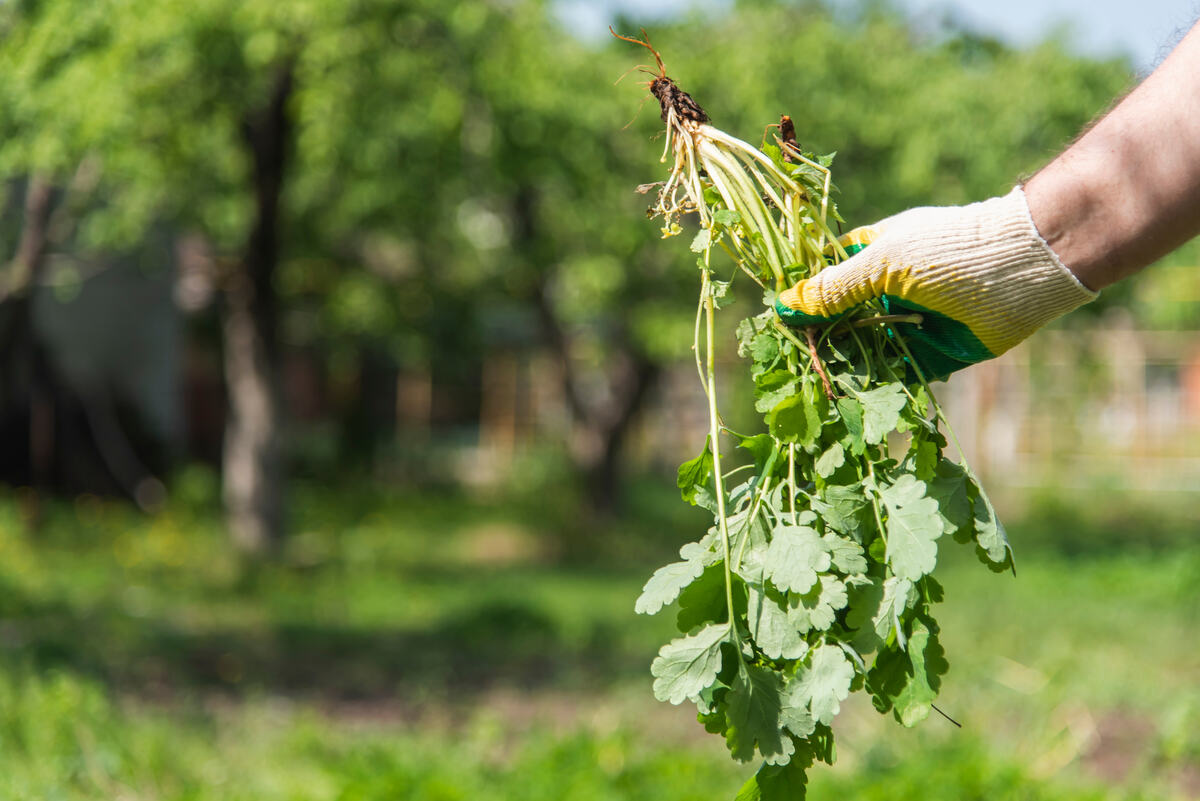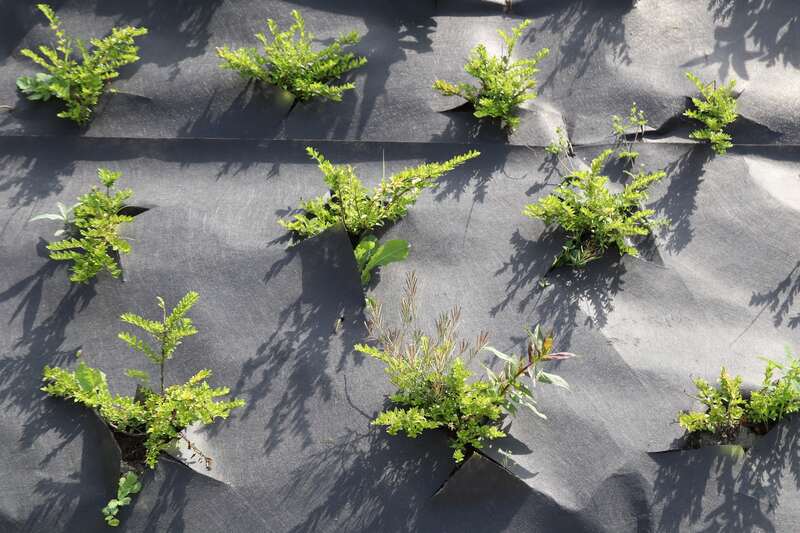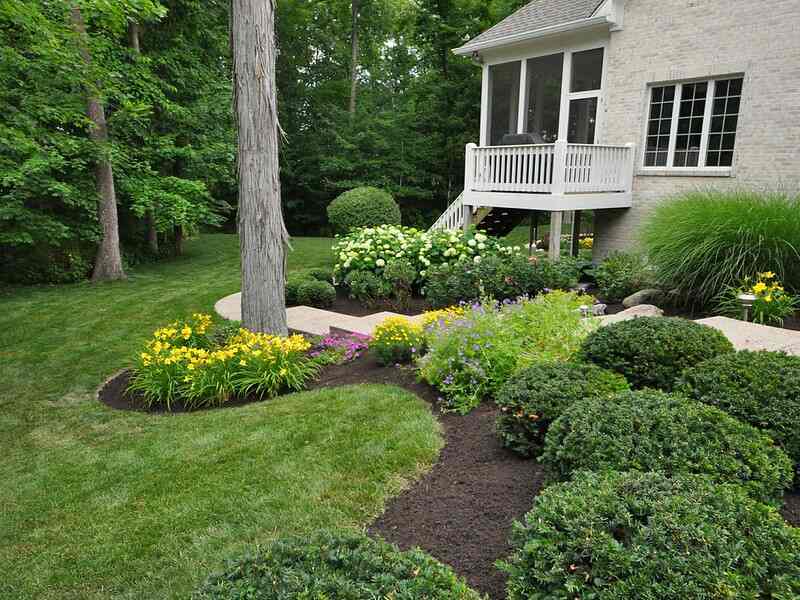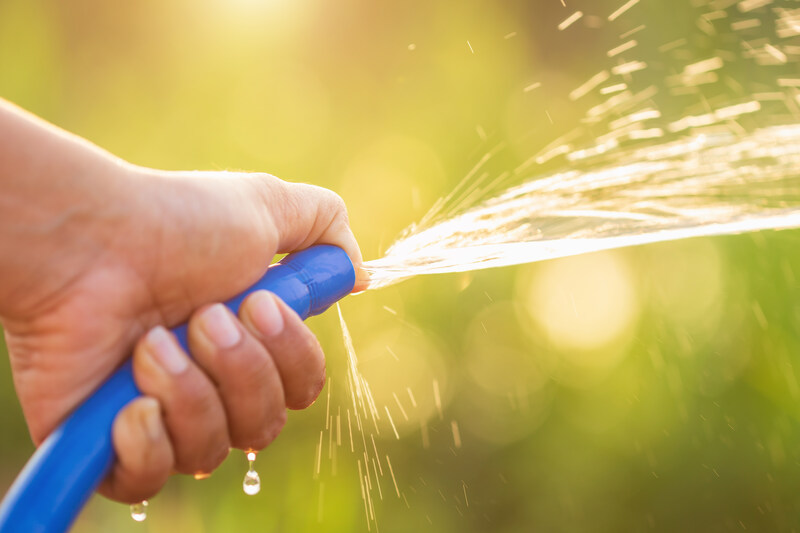
You add flower beds to beautify your yard. Then, weeds start to appear, ruining the aesthetics and health of your plants. Avoid this scenario by knowing how to prevent weeds in flower beds.
Proper bed preparation, plant spacing, using landscape fabric, and applying pre-emergent herbicide are just some of the things you can do to keep weeds at bay. You can also apply mulch, install edging, hand weed regularly, and water properly.
Here’s how you can maintain a weed-free flower bed:
| Project Difficulty: Easy to difficult, depending on the chosen method Estimated Time to Complete: Initial tasks can take 1 to 2 hours, and regular upkeep (weeding and watering) can take an hour or less. Project Cost: It depends. For example, a 4 ft. x 100 ft. roll of landscape fabric costs around $34, while landscape edging can cost anywhere from $2 to $11.50 per linear foot. |
Prepare the Bed Properly
Proper bed preparation can help you build a solid foundation for your flower bed, discouraging weeds from taking root.
Here are some pointers for preparing your flower bed properly:
- Rake out debris, rocks, and roots.
- Remove any existing weeds. Remember to pull out the roots as well.
- Till or loosen the soil 6 to 12 inches deep to disrupt weed seed layers.
- Build a raised bed or add soil to raise the surface of your flower bed (about 6 inches high) to create a barrier.
- Mix in compost or soil amendments to help boost plant health.
| For your existing flower beds, you can hire a LawnStarter lawn care pro to get rid of the weeds. Flower bed weeding costs around $96, on average. But with an average customer rating of 4.5, you have nothing to lose — except the weeds in your flower beds. |
Lay Landscape Fabric/Weed Barrier

Homeowners who want a low-maintenance weed control option use landscape fabric as a weed barrier. The fabric covers the soil, stopping sunlight from reaching weed seeds while allowing water and air to pass through (depending on the type).
Some homeowners add soil or mulch on top of the fabric to create a tidy appearance. But a word of caution: Weed seeds will eventually land on top of the soil or mulch and sprout. Regular hand-weeding or herbicide will keep them at bay.
Pro Tip: Another option is to use newspapers instead of landscape fabric. Besides being cost-effective and sustainable, newspapers enrich the soil as they decompose over time.
See Related: How to Install Landscape Fabric
Spread Mulch

Landscape fabrics aren’t everyone’s top pick for weed prevention. Many homeowners choose to add a different type of mulch to their flower beds instead.
Organic mulch, such as wood chips and pine needles, is a great option as it can add nutrients to the soil as it breaks down. But if you want a longer-lasting mulch, inorganic mulch like river rocks and recycled tumbled glass would be better.
Pro Tip: Spread the mulch evenly, about 2 to 3 inches deep. To avoid fungal disease or rot, don’t let organic mulch touch the stems of your plants — leave a gap (around 1 inch) between the plant stems and mulch.
| Have a LawnStarter landscaping pro mulch your flower beds. Our customers pay an average of $286 per mulching service and give our pros a rating of 4.7. |
See Related:
Install Edging

While it serves as a design element, garden edging can also help prevent weeds in your flower beds. It can act as a barrier that discourages underground runners and seed spread.
Brick, stone, and pavers are the most common materials, but some homeowners prefer plastic edging. For a more natural look, you can choose materials like bamboo, wood, or pebbles.
Follow these steps to install edging on your flower beds:
- Dig a trench around the flower bed to install the edging securely. Depending on the material, it should be around 4 to 6 inches deep.
- Leave at least 2 inches of edging above the ground.
- Angle the trench slightly outward to block roots from slipping under.
See Related: How to Keep Bermudagrass Out of Flower Beds
Use Strategic Plant Spacing

Planting your flowers close together will make your flower bed look lush and thriving. Plus, it can help crowd out weeds by creating a canopy that blocks out sunlight and limits the space where weed seeds can germinate.
The key is to use flowers that can be planted close together. For example, milliflora petunias can be planted 4 to 6 inches apart, while begonias need to be 8 to 12 inches apart.
Consider the following when close planting in flower beds:
- Follow spacing guidelines based on the type of plant, but lean toward the lower range for fuller coverage.
- Use groundcovers or low-growing fillers to cover the space between taller plants.
- Group plants with similar watering and sunlight needs to reduce both stress and open gaps.
Hand Weed Regularly
Even with all the prep work, a few weeds can still sneak in. So, you’ll need to keep them under control to prevent future generations of weeds. Gabrielle LaTora, agriculture and natural resources agent from the University of Georgia, says, “Hand-pulling is the best method — it’s time-consuming but very effective if you remove all the roots.”
Fortunately, you don’t have to do it every day. A quick check once a week should be enough. To avoid wasting your effort, we recommend following these rules when hand weeding:
- Hand-pull weeds after rain or watering when the soil is still soft, so roots will come out cleanly.
- Grab weeds at the base and pull them slowly, preferably with a hand puller tool.
- Toss the weeds into the trash and not into compost piles.
See Related: How to Get Rid of Weeds in Flower Beds
Water Properly

Your other best option, according to LaTora, is to grow a healthy, vigorous flower bed using proper management practices to prevent weeds from establishing.
Targeted watering can help your flowers thrive while leaving weed seeds high and dry. It’s one of the sneakiest ways of killing weeds in the garden.
- Use drip irrigation or soaker hoses to water only the plants, not the entire bed.
- Water in the morning to avoid prolonged dampness in your soil, which encourages weed growth.
- Avoid overhead sprinklers, as they can water germinating weed seeds in vacant soil.
- Don’t overwater, as soggy soil invites both weeds and diseases.
Apply Pre-Emergent Herbicide
A proven preventive technique, applying pre-emergent herbicides can stop weed seeds even before they sprout. They’re especially helpful in early spring or after turning the soil.
| Do’s | Don’ts |
| Apply in early spring or late summer, before weed seeds germinate | Don’t apply when it’s too cold |
| Choose products labeled for use around flowers | Avoid using lawn formulas |
| Water lightly after application | Don’t disturb the soil for at least an hour after application |
Note: Follow the instructions carefully, and remember that too much isn’t better.
| Hire one of our lawn treatment pros to put down a pre-emergent application. Our customers spend an average of $99 and give our pros an average rating of 4.7 for our early season pre-emergent services. |
See Related: When to Apply Pre-Emergent Herbicide
FAQ About Preventing Weeds in Flower Beds
Filling in the spaces between pavers with polymeric sand can help block weed growth. Clean the cracks and brush polymeric sand, then wet it down so it hardens.
No, landscape fabric is not a long-term solution for preventing weeds. Over time, weed seeds will blow on top, germinate, and root into the fabric.
Yes, coffee grounds can help prevent weeds in your flower beds. Plus, they can also help deter pests.
We Can Build Flower Beds and Keep Them Weed-Free
By following these weed prevention methods, you won’t have to worry about getting rid of weeds. And if you don’t want to get your hands dirty, contact a local landscaping pro who can help build your flower beds and keep them weed-free.
Sources:
- Gabrielle LaTora, agriculture and natural resources agent at the University of Georgia Extension, Fulton County. Personal interview.
- LawnStarter internal data.
- “Tips for Edging Your Lawn.” By Jerry Goodspeed, extension professor. Utah State University.
- “Weed Management in Annual Color Beds.” By Joe Neal, professor and extension specialist. North Carolina State University Extension.
- “Weed Management Strategies for Ornamental Landscape Beds and Ground Covers.” By Jay McCurdy, associate professor, and Geoff Denny, former assistant extension professor. Mississippi State University Extension.
- “Yard and Garden: Controlling Weeds in the Landscape.” By Aaron Steil, consumer horticulture extension specialist. Iowa State University Extension.
Main Image Credit: Man pulling out weeds. johnalexandr / Adobe Stock / License